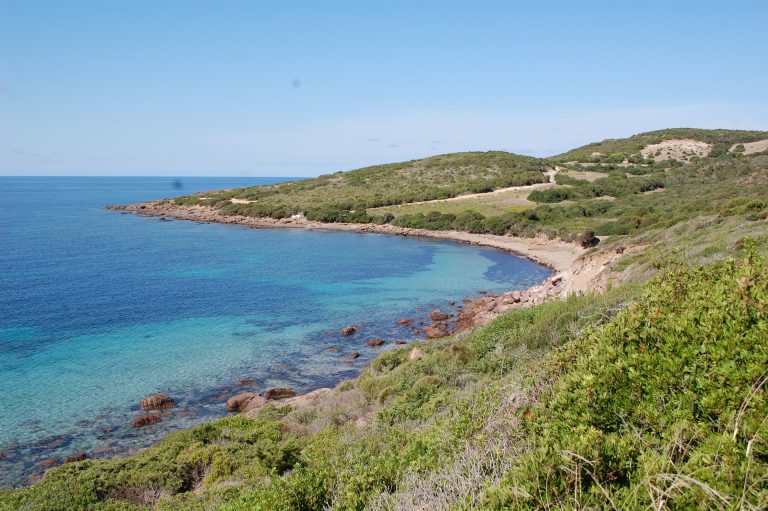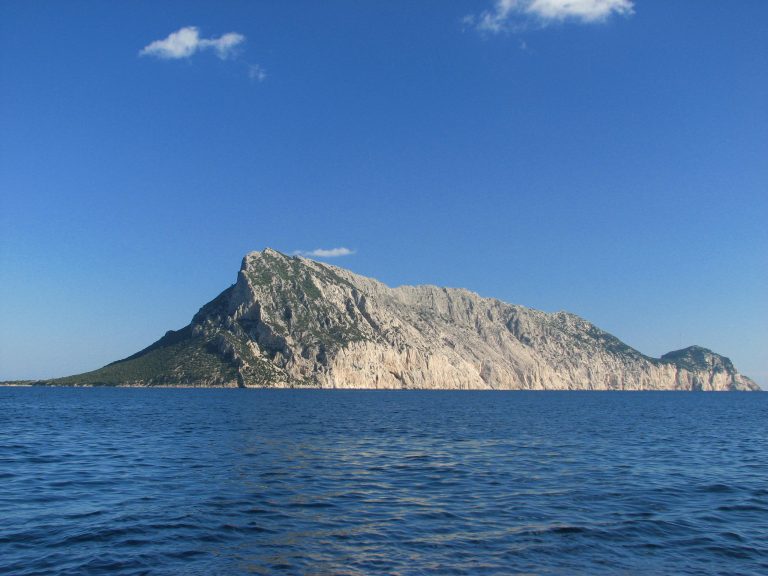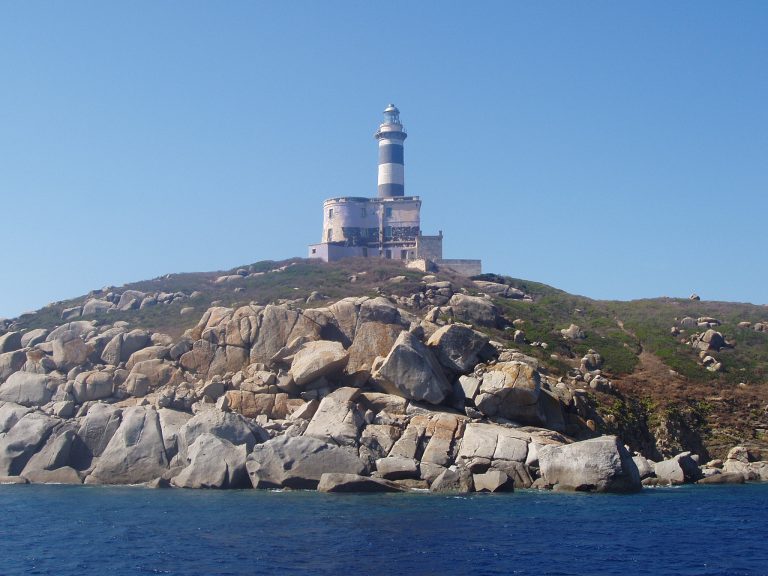When you hear Sardinia, you have surely immediately in mind the wonderful holiday island, which is after Sicily the second largest in the Mediterranean. What is less known is that Sardinia is surrounded by numerous smaller and equally beautiful islands and islets. The larger ones are Sant’Antioco and San Pietro in the southwest, Asinara in the northwest and La Maddalena in the northeast.
Each of these Sardinian islands has its own peculiarity and is a treasure of biological diversity and breathtaking natural scenarios. The best way to discover these destinations is on foot, by bike or by boat, in order to admire the timeless beauty in peace.
We would like to introduce you to 7 of the Sardinian islands in more detail, some larger and inhabited, others smaller and completely left to nature.
The Sant’Antioco island
Sant’Antioco on the south-western tip with almost 110 square kilometers is the largest of the Sardinian and the fourth-largest of the Italian islands and is connected to Sardinia by an isthmus, which is about 5 km long. The island has 14,000 inhabitants and the two main villages are Sant’Antioco on the east coast and Calasetta in the north. All year round, the are ferry connections from Calasetta to the neighboring island of San Pietro.
Due to its strategic position, the island was in the past an important port and trading point for silver and lead for the Phoenicians, Carthaginians and Romans and owes its name to St. Antiocus who lived and died here.
The Sant’Antioco island is best known for its beautiful bays and beaches, like Cala Lunga, Porto Sciusciau, Porto della Signora, Spiaggia Grande, Salina and Cala Sapone, which offer numerous diving and swimming opportunities.
The cliffs of Capo Sperone in the south of the island are spectacular, but Sant’Antioco not only offers fascinating and still unspoiled nature, but also ancient ruins of nuraghi and other prehistoric sites.
Together with San Pietro island and other smaller and uninhabited islets, Sant’Antioco makes part of the Sulcis Archipelago.

The San Pietro island: Greetings from Liguria
The San Pietro island with approx. 55 square kilometer is located in the southwest about 7 km from Sardinia, and can be reached all year round with by ferries from Calasetta (Sant’Antioco) or Portovesme on the mainland.
Although San Pietro is one of the larger Sardinian islands, it has only one inhabited center, the pretty and picturesque village of Carloforte, which is located directly on the sea and has about 6,000 inhabitants.
The San Pietro island was settled in 1736 by fishermen of Ligurian origin, who were carried off by pirates from their Ligurian homeland to the Tunisian island of Tabarka in the 16th century and were later driven from there. Carlo Emanuele III, the king of Sardinia, offered the fishermen San Pietro as a new home. The Arab-Ligurian influence is particularly evident in the their dishes which are often refined with delicious Pesto sauce. Other traditional meals are couscous and of course course the famous red tuna fish.
Carlofote has a rich cultural heritage and the Tabarchino, a variant of the Ligurian dialect, is still spoken by residents today.
We recommend a stroll through the narrow and lively streets of the village with its colorful buildings, maybe a nice lunch in one of the excellent restaurants or a cappuccino in one of the cafes next to the promenade.
You can drive around the island in one day and discover the beautiful and varied beaches (from fine sandy bays to rugged cliffs) and the amazing unspoiled nature. It is better, of course, to have more time and maybe set off on a (e-)bike.
The most popular beaches of San Pietro include La Bobba, La Calletta and Giunco. With children we recommend the Spiaggia Girin, which is characterized by crystal clear water and a flat seabed. To discoverers the underwater world there is the Cala Vinagra, a sheltered bay, which is characterized by a rocky bottom with little sand. The bay of Le Colonne is definitely worth seeing: until 2010 two 16 m high imposing rock pillars rose from the sea here, one of them was destroyed in 2013 during a strong storm and today only the base rises out of the water. The bay of Cala Fico, which is certainly worth a visit, is also nearby.
By the way, at Capo Sandalo you can admire Italy’s most westerly lighthouse.

The Asinara island, amazing nature and rare white donkeys
The uninhabited Asinara island in the northwest, with an area of 52 square kilometers, is the third largest in Sardinia after Sant’Antioco and San Pietro and the seventh largest one in Italy. Originally a penal colony and a military hospital, and later a maximum security prison until 1999, the island was uninhabited for a long time, so nature was able to preserve its origins without human intervention. The island is home to a good 680 plant species, 80 vertebrate species, including mouflon, wild boar, horses and the strictly protected, cute white donkeys, and a variety of bird species.
The coast of the Parco Nazionale Asinara consists of high slate cliffs in the west and wide bays and granite rocks in the east. From a naturalistic point of view, the island is characterized by typical Mediterranean vegetation and beautiful beaches, such as Cala d’Arena. Other beaches worth visiting are Cala Sabina and Cala Sant’Andrea.
If you like diving, you shouldn’t miss the bay of Cala Reale with its remains of an ancient Roman ship. This bay is also home to protect hurt sea turtles, which are released back into the wild after healing.
If you want to be overnight in the Asinara National Park, you can stay in the hostel in Cala D’Oliva in the north of the island. The island itself can be explored with guided boat tours, hiking, by bike and e-bike or with a jeep.

The La Maddalena archipelago: a sea of islands and islets
The La Maddalena is an archipelago in northeastern Sardinia between Sardinia and Corsica and comprises 7 larger islands (La Maddalena, Caprera, Santo Stefano, Spargi, Budelli, Santa Maria and Razzoli) and numerous smaller and uninhabited islets.
The village La Maddalena located on the main island, called also La Maddalena, has about 11,000 inhabitants and offers a lively center and a marina. You can reach La Maddalena by ferry from Palau all year round. The island of Caprera, on which the Italian freedom fighter Giuseppe Garibaldi spent his last years, can also be reached from La Maddalena by car, all the other islands and islets only by boat.
We recommend the panoramic round trip with car or scooter: La Maddalena offers beautiful viewpoints and great beaches await you.
La Maddalena is certainly an attractive holiday destination in Sardinia, there are numerous hotels, residences, holiday homes and B&B, most of them close to the sea and the beach: You won’t be bored between diving, boat trips and excursions.
Our favorites are Tegge beach on La Maddalena and the famous Cala Coticcio and Cala Napoletana beaches on Caprera.
To explore as best all the archipelago, we recommend a guided boat trip between the islands of Budelli, whose unique pink-colored beach can only be admired from afar, Santa Maria, Spargi and Razzoli.

The “Kingdom” of Tavolara (and Molara)
From Porto San Paolo, south of Olbia, you can reach the Tavolara island with its steep cliffs and flat headland in the west, in a few minutes by boat. On the island, especially in summer, there are restaurants, bars and excursion centers that offer guided tours to explore the fascinating landscape and the beautiful beaches and a crystal clear sea with an impressive colour spectrum of blue and turquoise.
When visiting Tavolara, don’t forget the smaller twin island of Molara with its spectacular dinosaur cliffs and the lagoons to the east.
And, there was indeed a king on the island! According to legend, King Carlo Alberto of Sardinia visited the island in 1836 and gave the island to its only inhabitant on a whim: the Kingdom of Tavolara, whose independence lasted until 1962, was born. Allegedly Queen Victoria of England was so fascinated by this kingdom that she sent an expedition to check and document its existence.

Serpentara and dei Cavoli islands with a view of Villasimius
If you decide to spend your vacation in southern Sardinia, Villasimius is certainly one of the most popular holidays destinations: beautiful long beaches covered with fine sand are surrounded by characteristic granite stones and cliffs shaped by wind and weather.
Worth mentioning are the beaches Porto Giunco, Porto Sa Ruxi, Campus, Campulongu, Simius and Traias and also the lagoon lake Notteri, an important habitat for the pink-colored flamingos.
If you want to see more, then you should visit the uninhabited and approx. 400 square meter large island of Serpentara by boat, which owes its name to the elongated and winding (snake-like) shape. But don’t worry: there are no poisonous snakes in Sardinia or on this island!
The easiest access to the island is the Caletta d’Approdo to the north, while the highest point (54m) is where the Spanish watchtower of San Luigi offers breathtaking panoramic views.
The uninhabited island of Isola di Cavoli is only 500 m from Capo Cabonara near Villasimius. This island, only 250 square meters in size, is a real natural jewel.
In front of the island, a statue of the Madonna, a work of the Sardinian sculptor Pinuccio Sciola, was sunk in the sea: every year in July there is a fascinating maritime procession during which the Virgin of the Sea is honored with floral wreaths and prayers.
The islands of Serpentara and dei Cavoli are part of the Capo Carbonara marine reserve, and fishing and diving are restricted here. The protected area is characterized by a great diversity of species, you can discover barracudas, large groupers, lobsters and much more here.

 it
it de
de nl
nl en
en fr
fr

